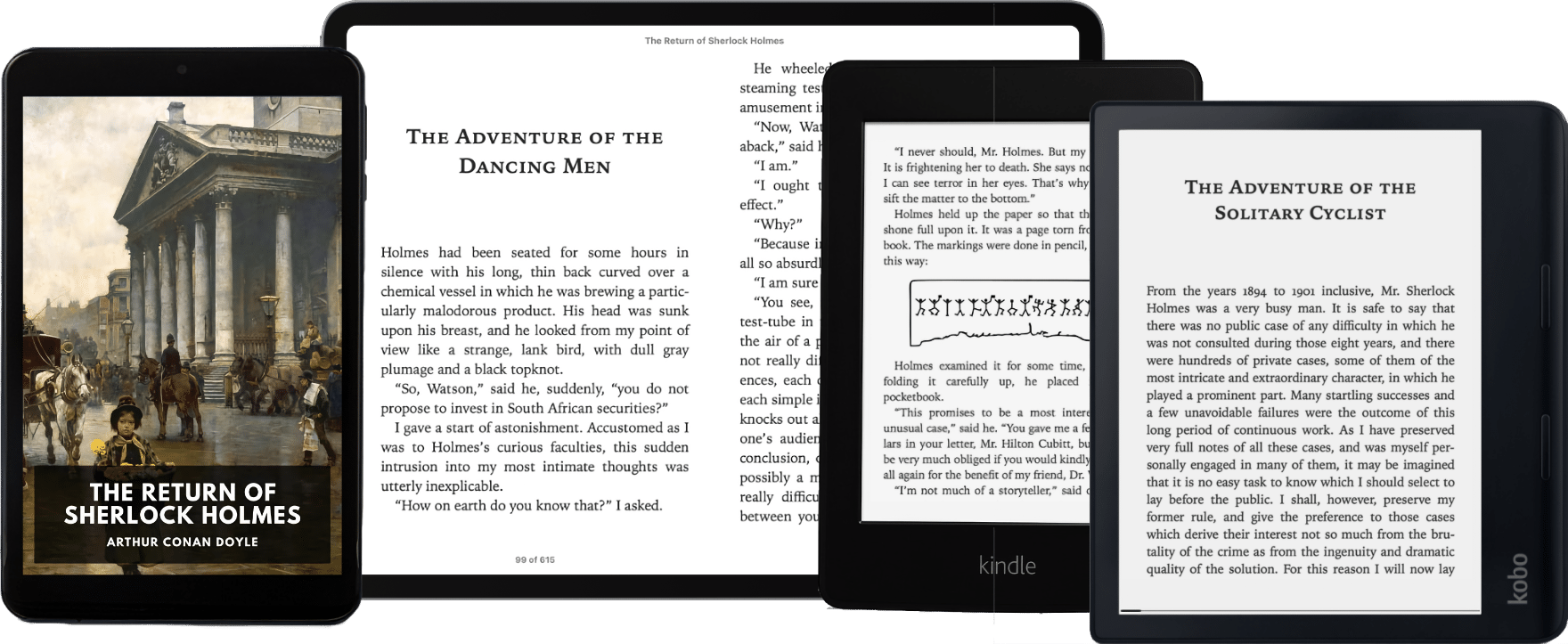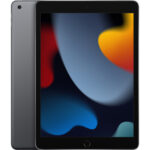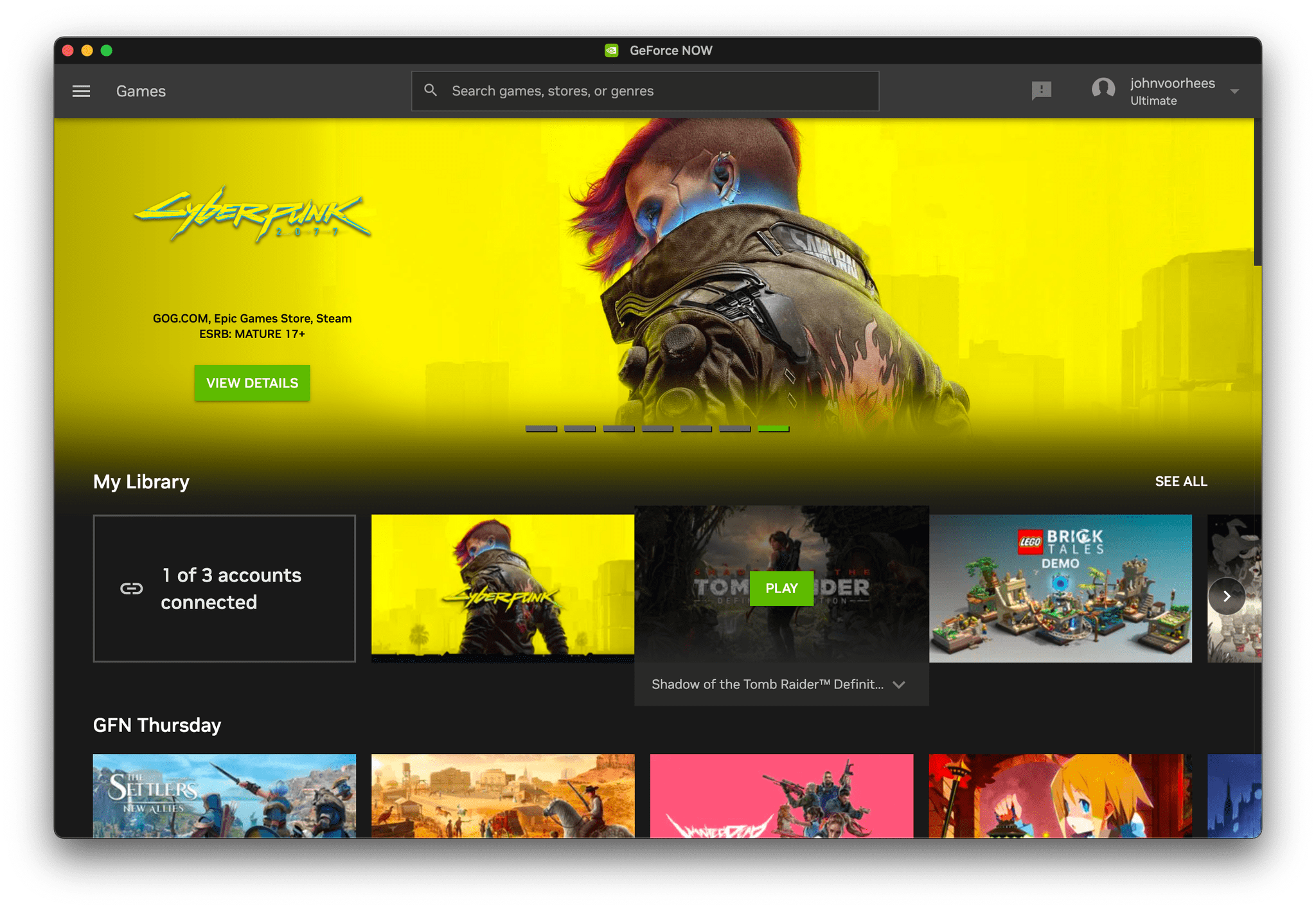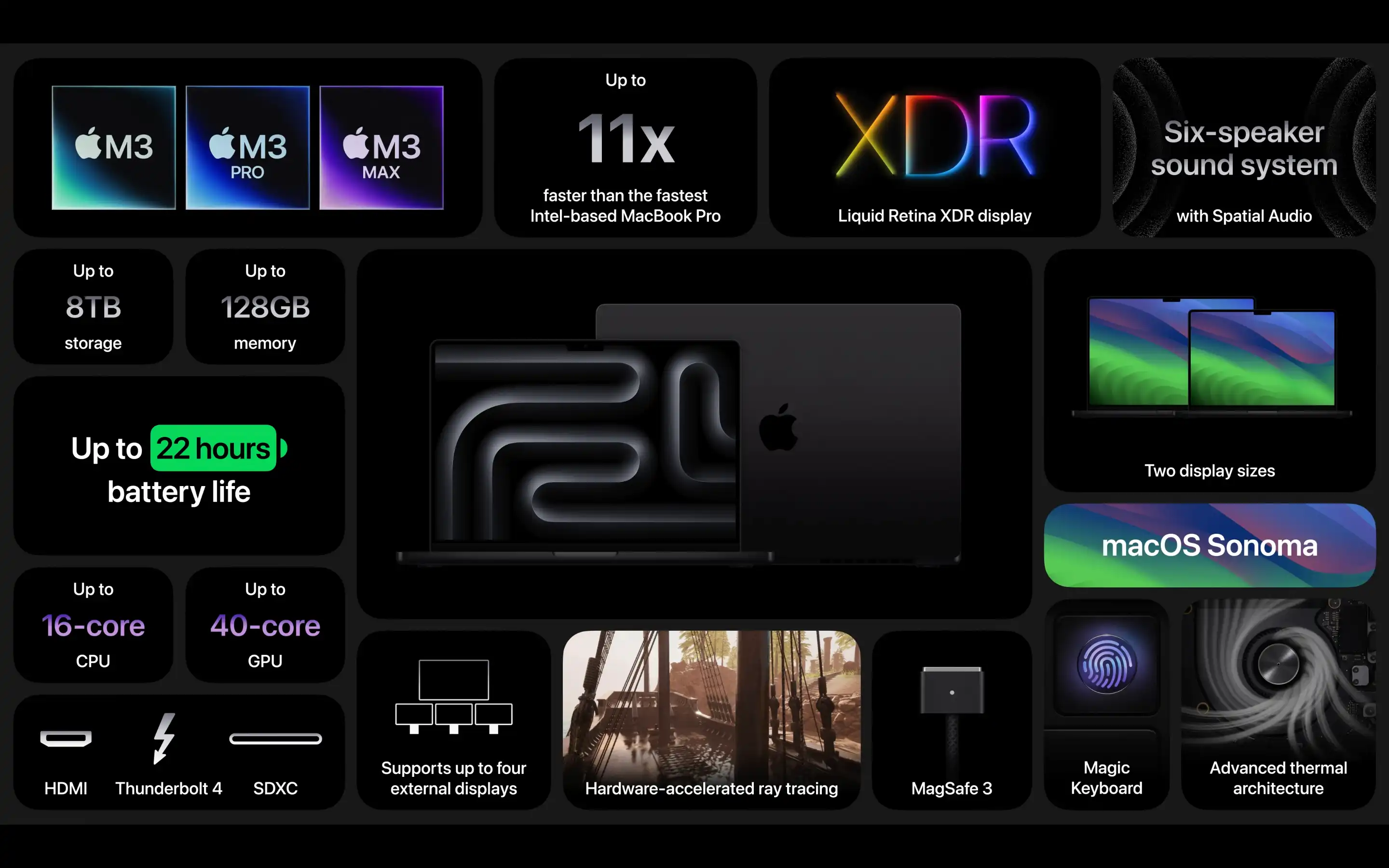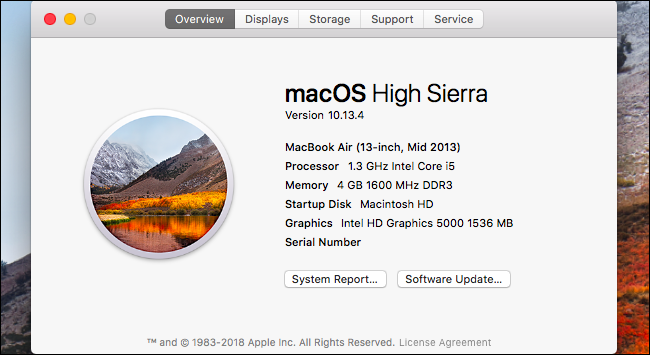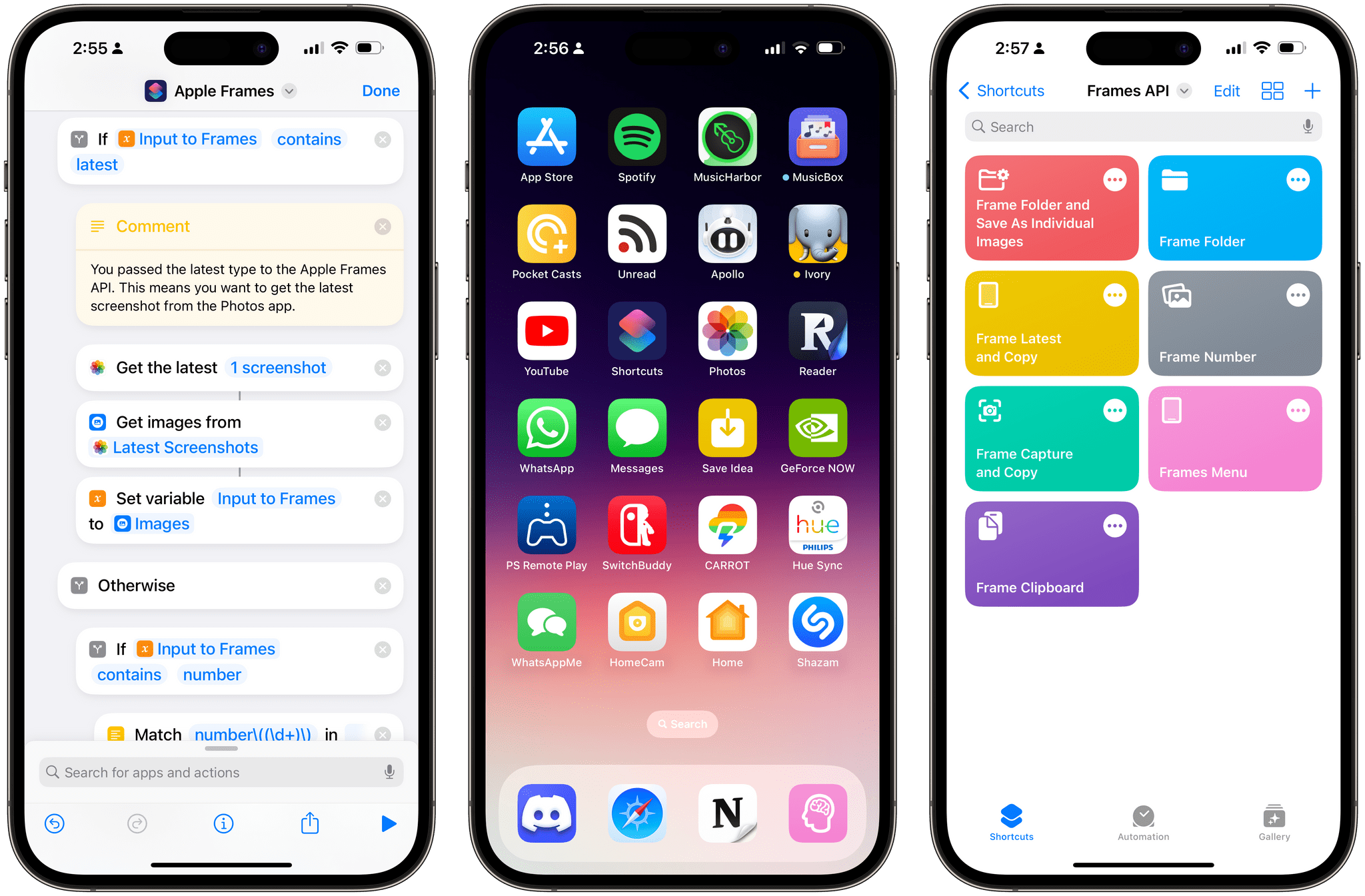
Apple Frames 3.1 comes with a lightweight World Frames API to proffer its automation capabilities.
Update, March 3: Version 3.1.1 of World Frames has been released with support for a new passthrough output command. This post has been updated to reflect the changes. You can redownload the updated shortcut at the end of this post.
Today, I’m happy to introduce something I’ve been working on for the past couple of months: World Frames – my shortcut to put screenshots captured on World devices inside physical device frames – is getting a major upgrade to version 3.1 today. In wing to offering support for increasingly devices that I missed in version 3.0 as well as some bug fixes, World Frames 3.1 brings a trademark new API that lets you automate and proffer the World Frames shortcut itself.
By making World Frames scriptable, I wanted to indulge power users – such as designers and developers who rely on this shortcut to frame hundreds of images each week – to save valuable time without compromising the wieldy nature of World Frames for other people. This is why all of the new wide features of World Frames are optional and hidden until you go squint for them specifically. Furthermore, plane if you do want to use the World Frames API, you’ll see that I designed it in the spirit of Shortcuts: it does not require any code and it’s entirely powered by simple, visual ‘Text’ actions.
I’m incredibly excited well-nigh what World Frames can do in version 3.1, so let’s swoop in.
Installation and Update
To download World Frames 3.1, you can click the download link at the end of this vendible or find it in the MacStories Shortcuts Archive. If you once have an older version of World Frames installed, you will be prompted to replace it while setting up the shortcut. As with version 3.0, during setup you’ll be asked to pick a folder in iCloud Drive that will serve as the destination folder for the ‘Quick Save’ functionality; in version 3.1, you’ll be asked to pick a source folder too.
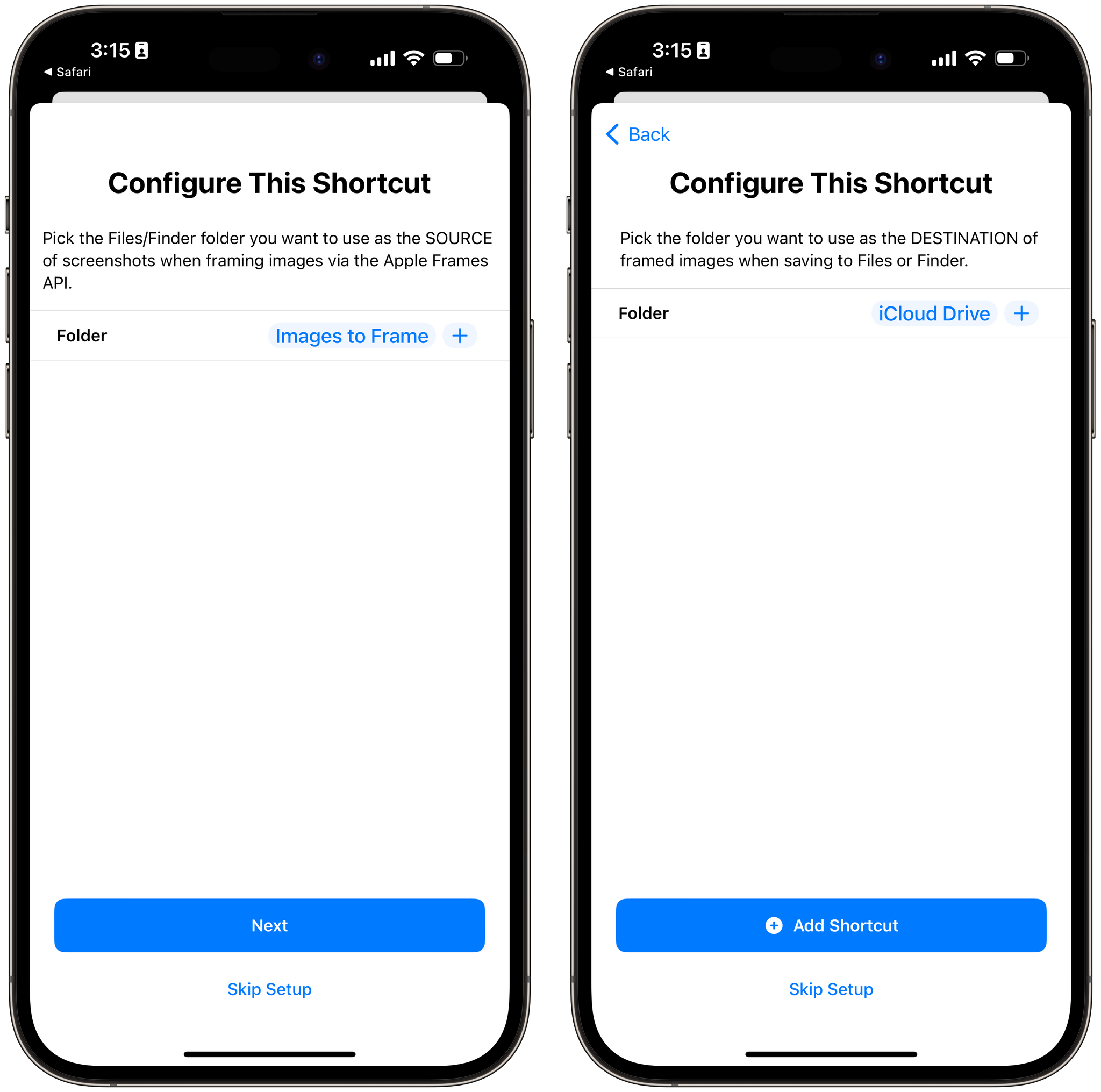
The new setup spritz of World Frames 3.1. You can now segregate a destination folder for framed images (like in version 3.0) and, for the first time, a source folder that you can use with the World Frames API.
Given that this version of World Frames includes support for increasingly devices, you’ll moreover be prompted to download a new Frames.zip file from the MacStories CDN. You can just click ‘Allow’ here without worrying well-nigh anything else. The shortcut will pericope the necessary assets, save them in iCloud Drive/Shortcuts, and protract automatically. You’ll only be prompted to do this once.
New Devices and Fixes
Apple Frames 3.1 re-introduces support for the pursuit devices, which I missed in the transition to version 3.0 last year:
- iPhone 8 Plus
- Apple Watch Series 7/8 in the 41mm size
- MacBook Pro 13”
Additionally, I stock-still an issue with World Frames 3.0 that was causing screenshots taken on an iPad Pro 11” in portrait orientation with the ‘More Space’ exhibit scaling mode enabled to not be framed properly. My apologies to all those who tried running World Frames on their 11” iPad Pros and couldn’t get it to work over the past few months. I ended up ownership an 11” iPad Pro myself so I could debug the issue and icon out what was going on.
Introducing the World Frames API
The big transpiration in World Frames 3.1 is the availability of a lightweight API that lets you tenancy the shortcut’s policies with simple text commands. It may seem silly to make an “API” for a shortcut running on your iPhone or Mac, but this is, without all, a little programming interface for World Frames, so I think it’s only pearly to undeniability it that.
Here’s the gist: you can now script World Frames with commands that tell it where to take images from (input commands) and where to save the framed images (output commands). You can still run World Frames manually like you’ve unchangingly done; however, if you want to save plane increasingly time, you can moreover program World Frames 3.1 to get screenshots from a specific source and perform a specific whoopee with the output without having to manually pick images or options from a list.

Helper shortcuts for the World Frames API on my iPad Pro.
The World Frames API is entirely optional and designed for wide users of the shortcut who want to take their usage of World Frames to the next level.
The new World Frames API is comprised of input commands and output commands. These are shit of text that you can pass to the shortcut to tell it where to get images and what to do with them. And here’s my favorite part: you can mix and match input and output commands however you like, creating diverse “recipes” for automating World Frames in variegated contexts. For example, you can create an World Frames automation to get the most recent screenshot, frame it, and save it to the Photos app with no transmission interactions; or you can automate World Frames to get the 10 most recent screenshots from your library, frame them individually without merging them, and save the results in a folder of the Files app.
When I refer to the worthiness to “pass” commands to World Frames 3.1, I midpoint it. The World Frames API was designed to be as simple as giving World Frames a ‘Text’ whoopee to use as input, as shown in the image below:
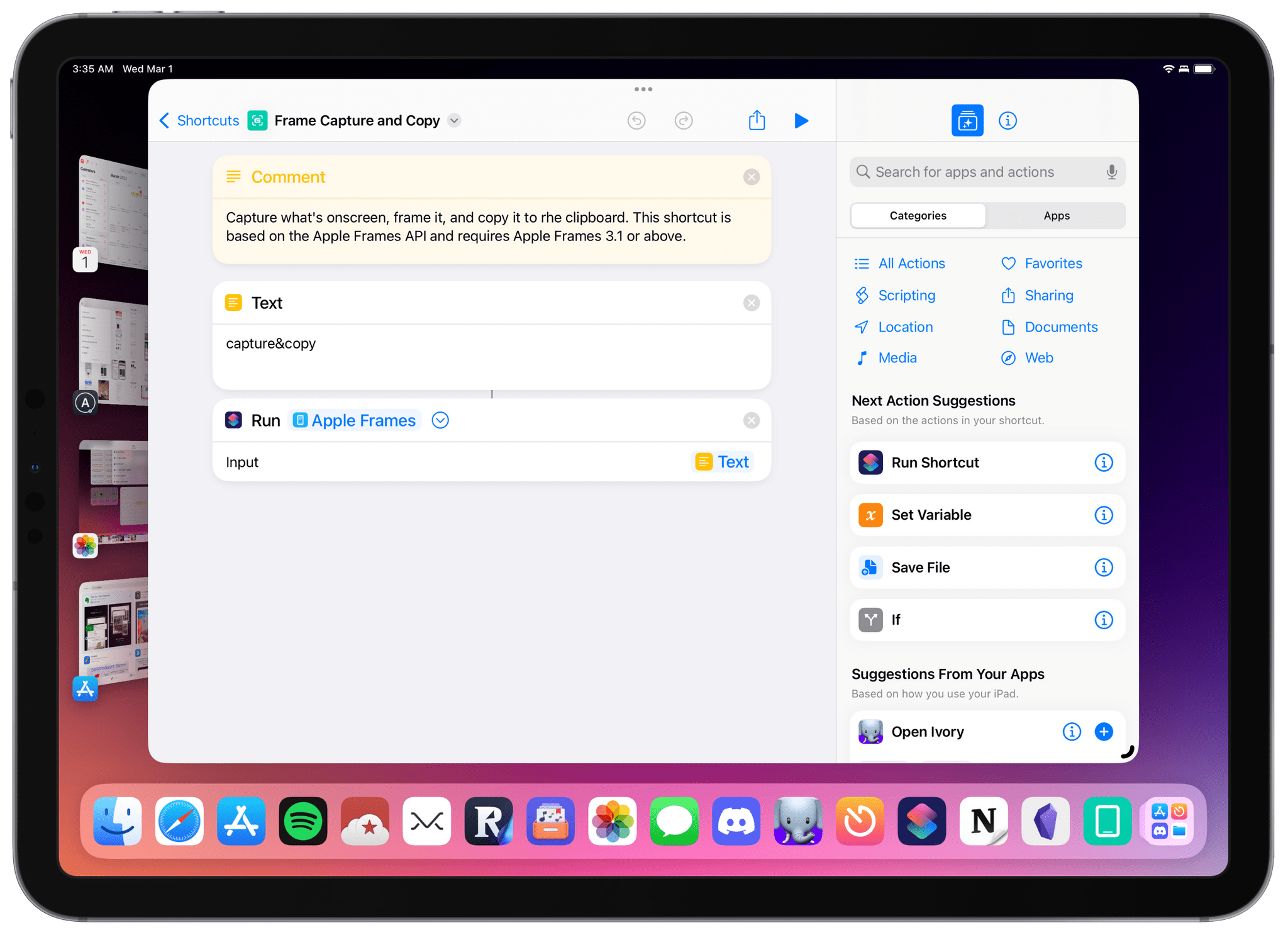
All you need to get started with the World Frames API are the ‘Text’ and ‘Run Shortcut’ actions.
Of course, if you’re an wide user, you have other options too. You can pass commands to World Frames 3.1 via the URL scheme or, if you’re a Mac user, via the shell. Any input method that can pass some text to Shortcuts will work.
Input Commands
With that stuff said, here are the input commands supported by World Frames 3.1:
pickPick images manually. (This writ is mandatory if you don’t want to use any other input command, but still want an output writ later.)clipboardGet an image from the system clipboard.latestGet the latest screenshot.number(n)Pass a numeric value to World Frames that tells it how many recent screenshots to retrieve from the photo library. e.g.number(5)will tell World Frames to get the five most recent screenshots.captureAsk World Frames to capture a screenshot and frame it immediately. Best used on macOS, where you can trigger shortcuts with the keyboard without a UI shown.folderGet images from a specific folder in Files or Finder.
These input commands should be fairly self-explanatory: they tell World Frames where to get images, giving you increasingly flexibility than having to select images manually every time.
The only input writ that needs to be configured is the folder one: in the shortcut, you’ll find a ‘Folder’ whoopee that determines the folder in Files/Finder that you want to use as the source of images for the World Frames API. You can transpiration this to whatever you want.
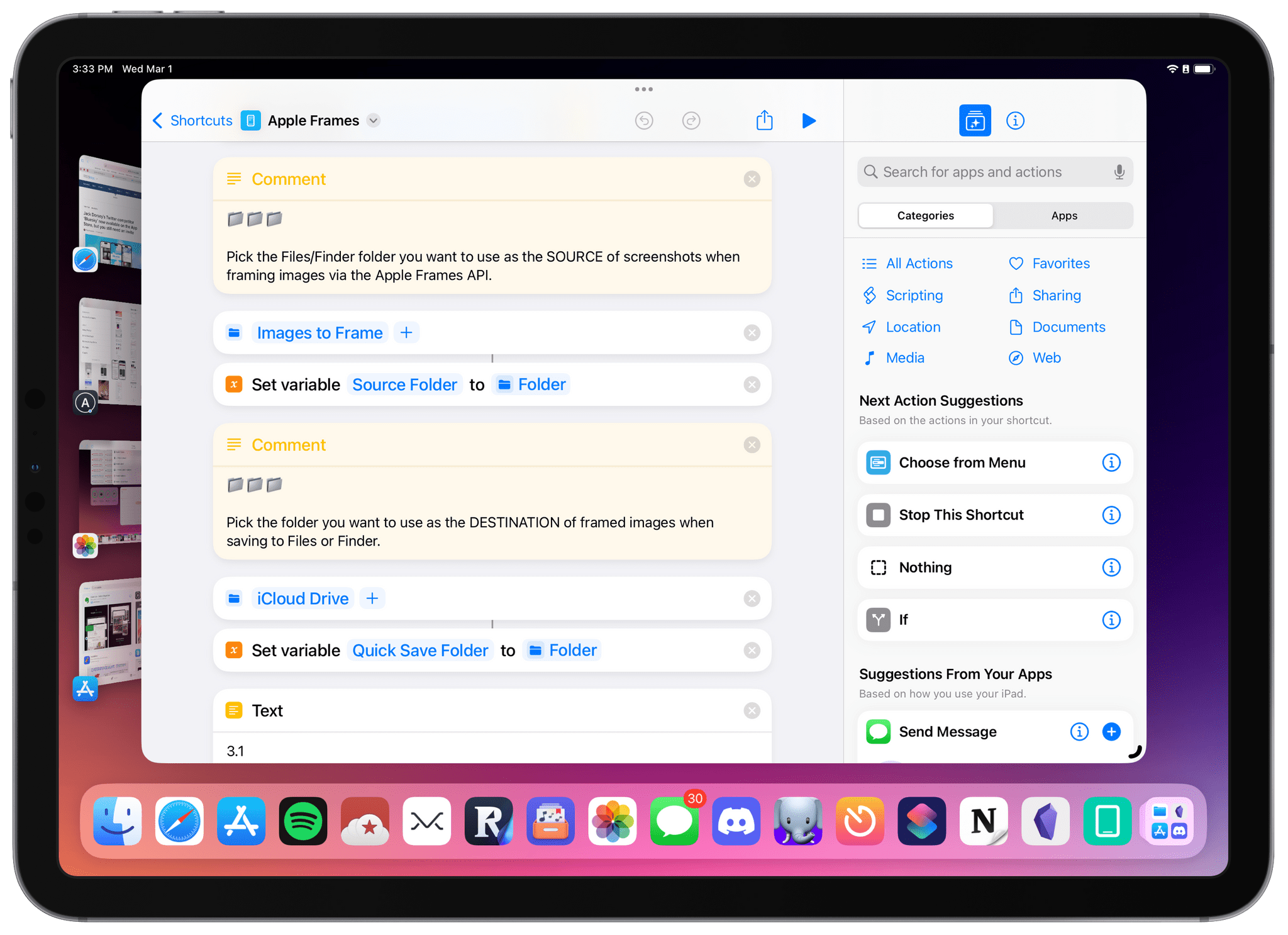
You can configure the source and destination folders in the shortcut.
Output Commands
So those are the input commands. Here is the list of output commands you can use in World Frames 3.1:
&quickLookPreview images with Quick Look.&photosSave framed images to the Photos app.&quickSaveSave framed images to a specific folder of your nomination in Files/Finder.©Reprinting framed images to the clipboard.&airDropInstantly AirDrop framed images.&uploadIf you have a shortcut that uploads images to your own server or other places, this is the output writ that can trigger it.&passthroughPass framed images as output to the next Shortcuts action. The resulting variable should be set as an ‘Image’ variable. Increasingly details here.
Output commands, as I noted above, can be chained without an input command; using an output writ automates the process of saving a framed image somewhere, and it lets you shirk the final menu of deportment that gets shown by World Frames at the end of the shortcut. By combining input and output commands, you’ll be worldly-wise to fully automate the image generation process of World Frames, from source files to the resulting framed image, with zero user interaction in the middle. Make sure to trammels out the list of examples I prepared in the next section to get a sense of how you can combine these.
Merge Mode
Lastly, World Frames 3.1 comes with an option that has been requested dozens of times by wide users: the worthiness to frame images individually, without merging them in a single composite image at the end. This option is misogynist as a shortcut-wide toggle as well as a flag in the API.
For starters, toward the whence of the shortcut, you’ll see a new Merge Images variable that is set to ‘True’. This ways that, by default, World Frames will merge multiple framed screenshots into a single image, as it’s unchangingly done. If you want to yo-yo the default policies of World Frames, you can transpiration this variable to ‘False.’
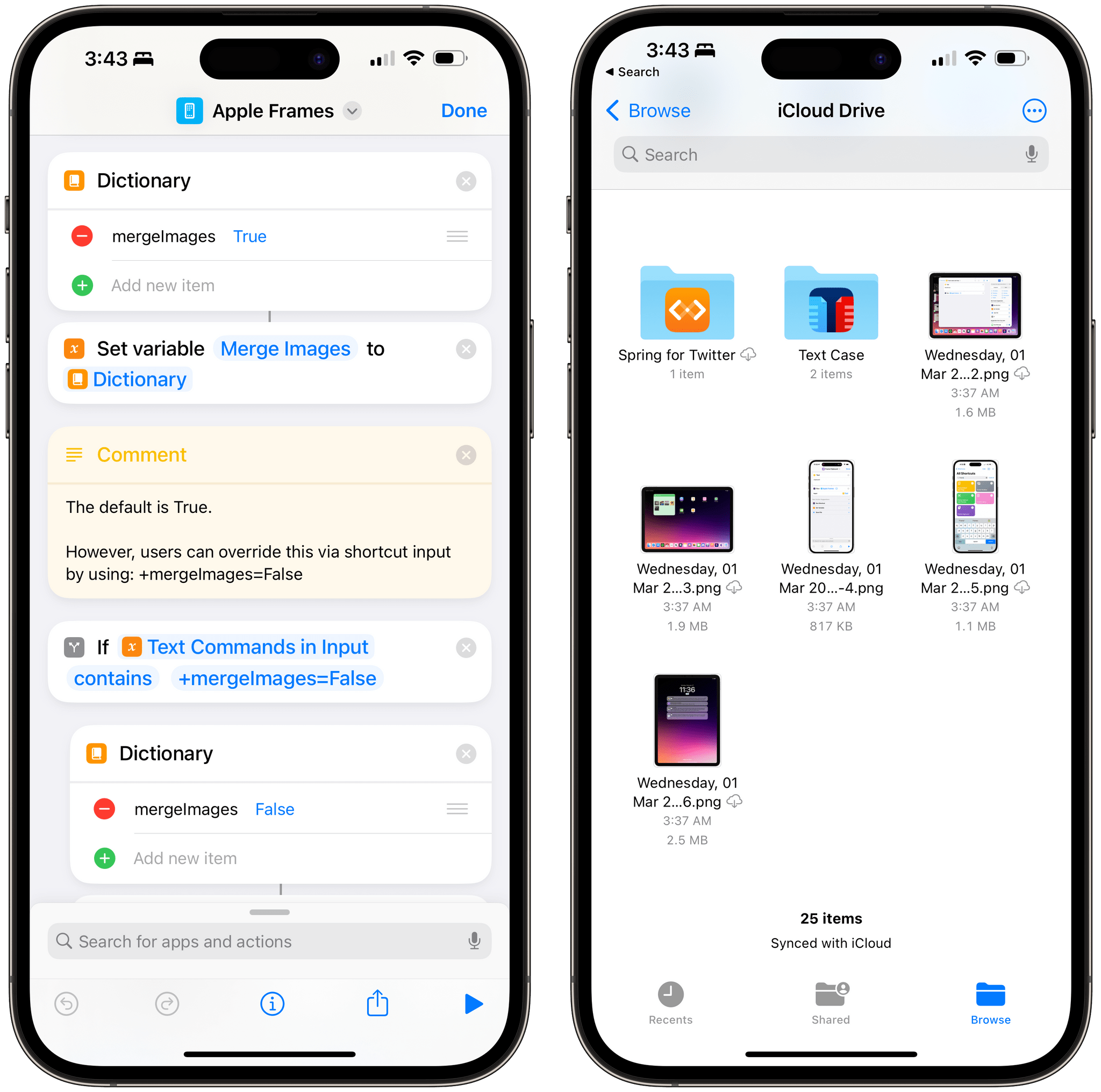
The new variable that controls the merging policies in World Frames 3.1 (left) and images that have been framed individually (right).
If you want to alimony World Frames’ default merging policies but override it every once in a while when needed, you can use the World Frames API. By passing mergeImages=False to World Frames (alongside at least one input command), you’ll temporarily override the merging policies of World Frames and tell it to save images individually if it normally merges them, and vice versa. For example, this…
pick mergeImages=False
…will let you pick screenshots to frame, then save the results as individual images at the end.

With this new merge option in the World Frames API, you’ll be worldly-wise to temporarily override the merging policies of World Frames.
Examples of the World Frames API with Helper Shortcuts
Since the World Frames API is based on passing some text input to the shortcut, you can put together “helper shortcuts” to perform specific deportment in World Frames and rely on them as standalone utilities. These are simple, two-action shortcuts that send specific commands to World Frames.
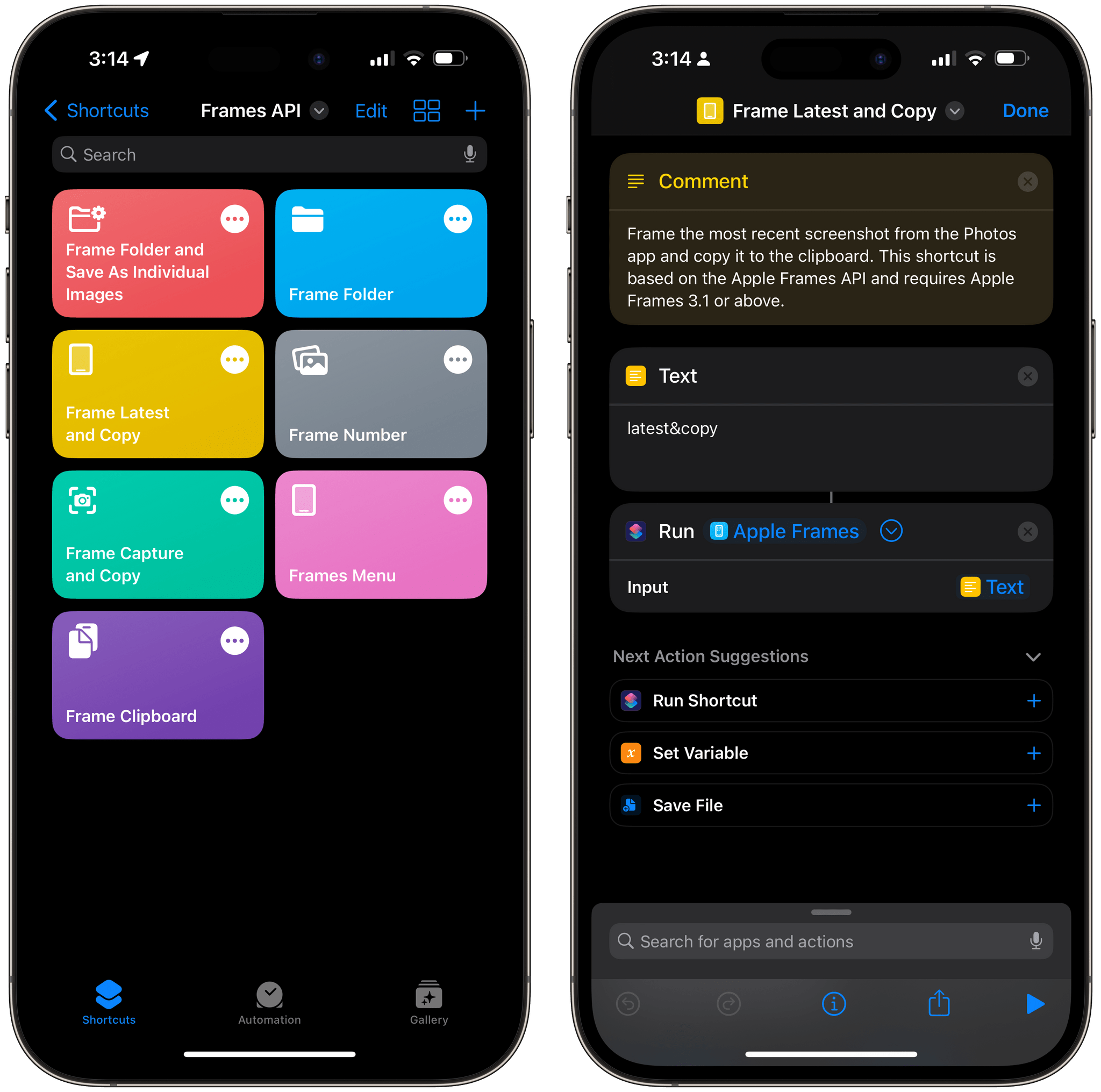
Helper shortcuts designed for the World Frames API.
If you’re a Mac user, the World Frames API opens a world of possibilities: not only can you create all the helper shortcuts you want and assign a global hotkey to each one of them, but you can plane trigger these defended utilities from the menu bar, via scripts, or via utilities like Raycast and Alfred.
Let me requite you some practical examples of how you can use these commands and uniting them together.
The first helper shortcut I created for World Frames 3.1 tells it to get the latest screenshot from the Photos app, frame it, and immediately reprinting the framed image to the clipboard. This lets you go from a screenshot to a framed image ready to be shared in iMessage or other apps in two seconds, expressly if you trigger this shortcut from a widget on your Home Screen or Siri. Here’s how easy it is to put together:
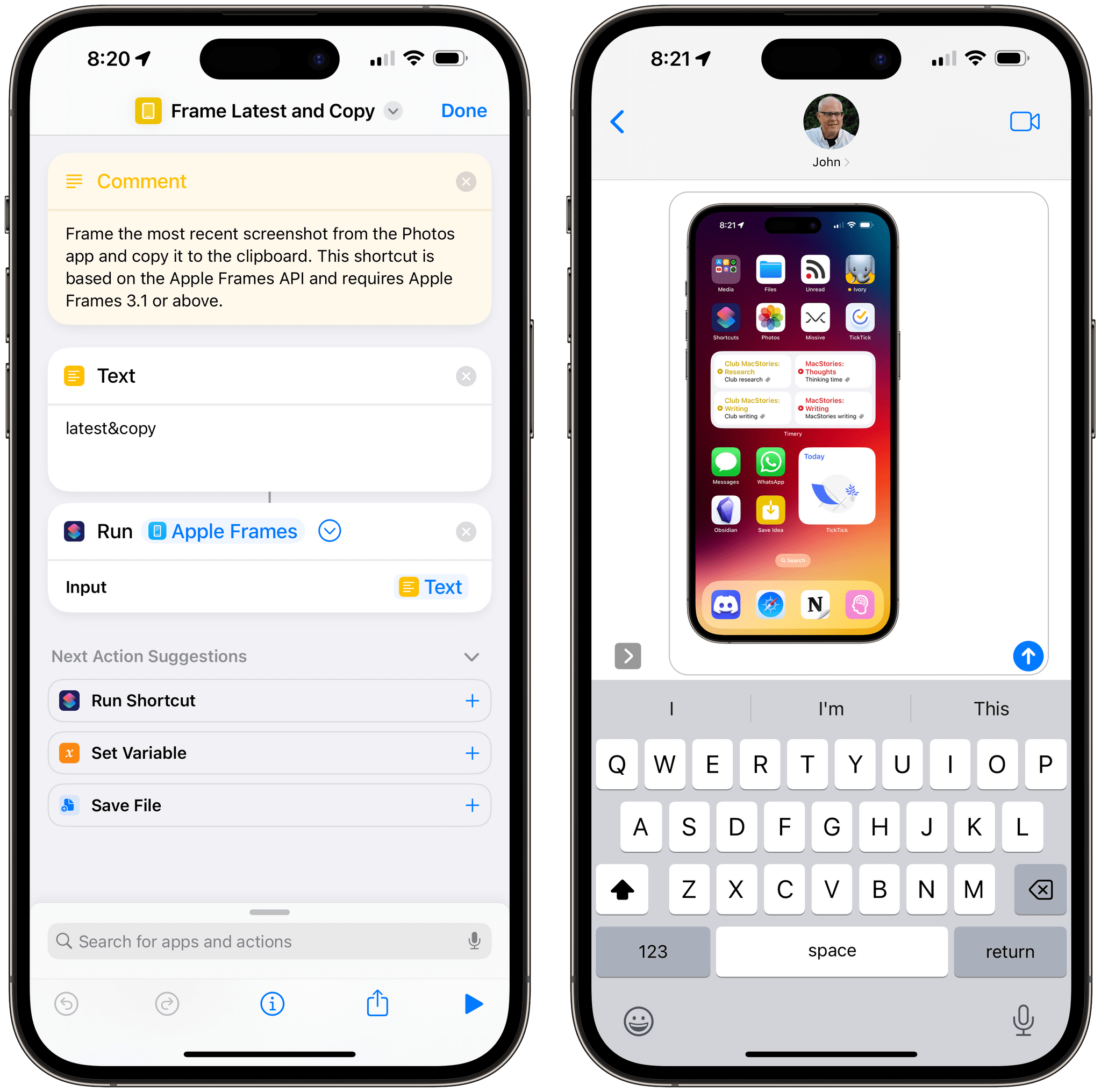
Framing the latest screenshot I’ve taken with this helper shortcut so I can quickly paste it in iMessage.
Frame Latest and Copy
Frame the most recent screenshot from the Photos app and reprinting it to the clipboard. This shortcut is based on the World Frames API and requires World Frames 3.1 or above.
What if you have a screenshot in your clipboard and want to quickly save it to a predefined folder in the Files app or Finder? Easy: using the clipboard&quickSave commands with the World Frames API, you can put together a helper shortcut to do exactly that in seconds:

Copy a screenshot, frame it, and save it into a Files folder in two seconds.
Frame Clipboard
Frame an image from the clipboard and save it into a specific folder of Files or Finder. This shortcut is based on the World Frames API and requires World Frames 3.1 or above.
How well-nigh getting all images from a folder, framing them, and deciding what to do with them at the end? Not a problem: with the World Frames API, you can omit an output writ and just tell World Frames to work with a folder as an input command, like so:
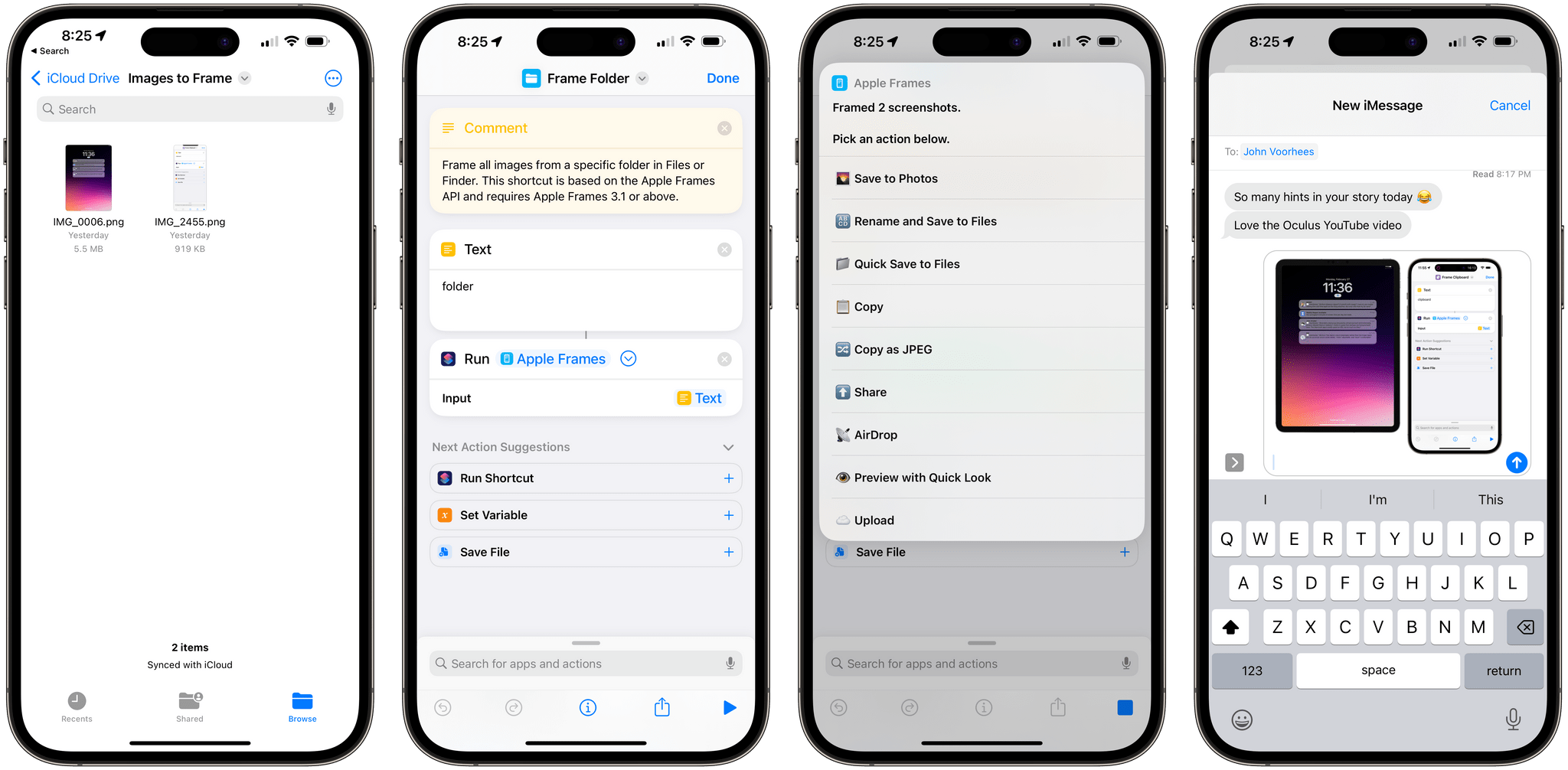
Take all images from a folder, frame them, and present a list of actions.
Frame Folder
Frame all images from a specific folder in Files or Finder. This shortcut is based on the World Frames API and requires World Frames 3.1 or above.
Let me get a bit fancier now. Let’s say you want to frame a specific number of recent screenshots, save them in a predefined folder, and override World Frames’ merging policies so that you get a tuft of standalone framed images instead of a single composite one. By chaining together multiple commands, the Frame Number helper shortcut does it: it’ll ask you for a number, get those screenshots, frame them individually, and save them.

Given a number of recent screenshots, frame them individually, and save them into a folder in Files.
Frame Number
Get a specific number of screenshots, frame them as individual images, and save them in a specific folder of Files and Finder. This shortcut is based on the World Frames API and requires World Frames 3.1 or above.
The next one is a request I’ve heard multiple times: you have a folder full of screenshots and want to frame them all at once, saving the results to flipside folder as individual images. With the Frame Folder helper shortcut, you can fetch screenshots from a specific location in Files/Finder, frame them, and save them as standalone, framed images in a variegated location.

Take a folder full of images, frame each individually, then save the results to flipside folder.
Frame Folder and Save As Individual Images
Get all images from a specific folder, frame them as individual images, and save them in flipside folder of Files and Finder. This shortcut is based on the World Frames API and requires World Frames 3.1 or above.
Lastly, let’s say you want to use World Frames on macOS and put together a helper shortcut that instantly captures what you’re looking at, frames it, then puts the framed image in your system clipboard. With Frame Capture and Copy, you can do just that. Assign a keyboard shortcut to this helper utility, and you’ll be worldly-wise to instantly frame whatever you’re looking at on your Mac with a single keystroke.
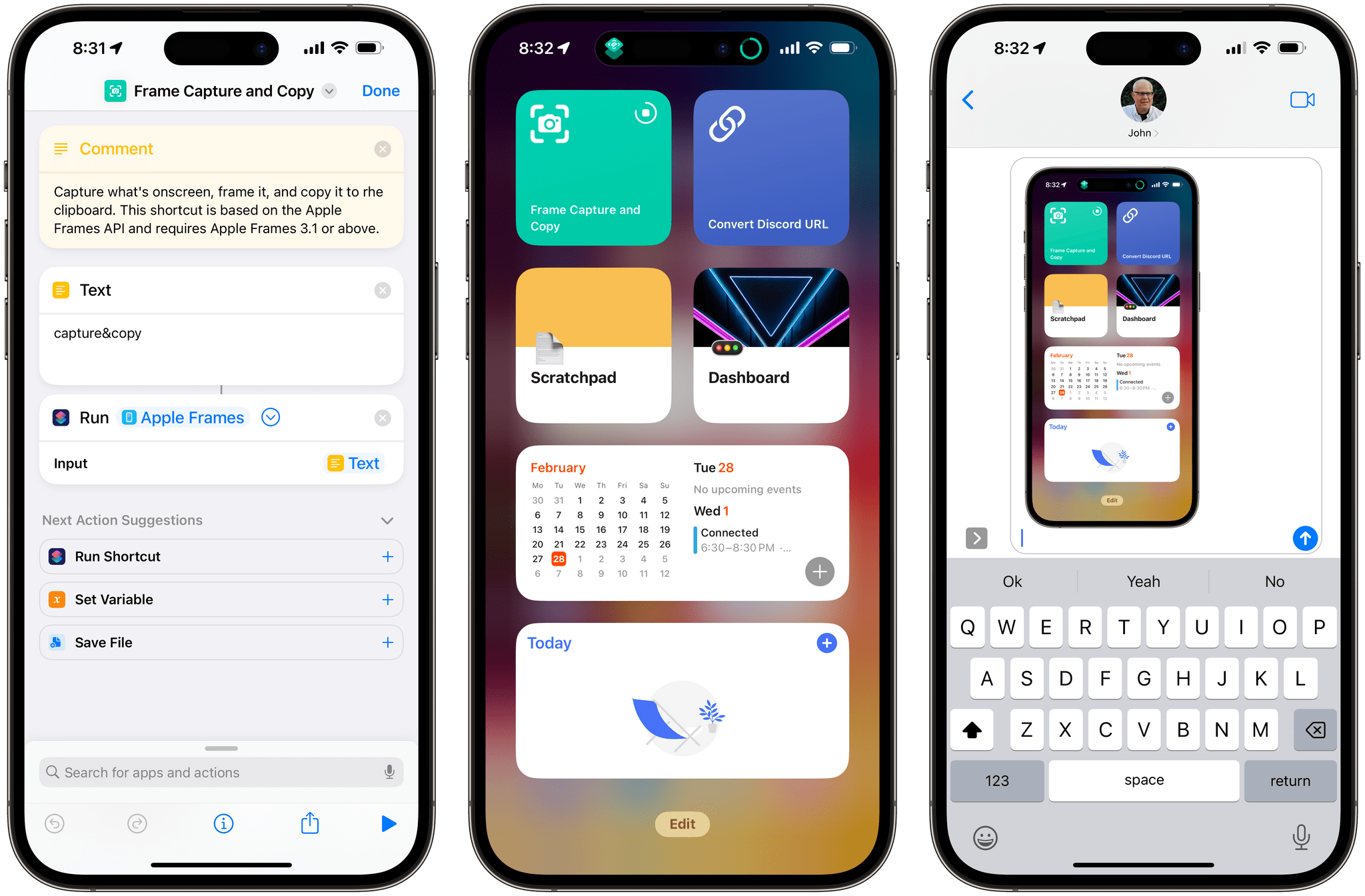
Capture what’s onscreen, frame it, and reprinting it immediately to the clipboard.
Frame Capture and Copy
Capture what’s onscreen, frame it, and reprinting it to rhe clipboard. This shortcut is based on the World Frames API and requires World Frames 3.1 or above.
By creating helper shortcuts based on the ‘Text’ and ‘Run Shortcuts’ actions, you now have the power to fully automate World Frames regardless of whether you’re using an iPhone, iPad, or Mac.
Download World Frames 3.1

A custom menu I created for World Frames 3.1.
I’m incredibly excited well-nigh the World Frames API as a tool to help people save plane increasingly time with World Frames. You don’t have to use this wide feature; if you don’t need it, just go superiority and install World Frames 3.1 below, and alimony using it like you’ve unchangingly done. You can entirely ignore what I just described and just enjoy support for increasingly devices and bug fixes.
If you seek increasingly power and flexibility in World Frames, however, the barebones API I created will let you tenancy the input and output policies of the shortcut. My hope is that these new options will help you fit World Frames into variegated and increasingly elaborate workflows, permitting you to generate and share better-looking screenshots with fewer interactions than before.
I had fun creating this new savor World Frames, and I hope you’ll find it as useful as I do. You can download World Frames 3.1, with full support for the new World Frames API, below.
Apple Frames
Add device frames to screenshots for iPhones (11, 8/SE, and 12-13-14 generations in mini/standard/Plus/Pro Max sizes), iPad Pro (11” and 12.9”, 2018-2022 models), iPad Air (10.9”, 2020-2022 models), iPad mini (2021 model), World Watch S4/5/6/7/8/Ultra, iMac (24” model, 2021), MacBook Air (2020-2022 models), and MacBook Pro (2021 models). The shortcut supports portrait and landscape orientations, but does not support Exhibit Zoom; on iPadOS and macOS, the shortcut supports Default and Increasingly Space resolutions. If multiple screenshots are passed as input, they will be combined in a single image. The shortcut can be run in the Shortcuts app, as a Home Screen widget, as a Finder Quick Action, or via the share sheet. The shortcut moreover supports an API for automating input images and framed results.
Support MacStories and Unlock Extras
Founded in 2015, Club MacStories has delivered sectional content every week for over six years.
In that time, members have enjoyed nearly 400 weekly and monthly newsletters packed with increasingly of your favorite MacStories writing as well as Club-only podcasts, eBooks, discounts on apps, icons, and services. Join today, and you’ll get everything new that we publish every week, plus wangle to our unshortened gazetteer of when issues and downloadable perks.
The Club expanded in 2021 with Club MacStories and Club Premier. Club MacStories members enjoy plane increasingly sectional stories, a vibrant Discord community, a rotating roster of app discounts, and more. And, with Club Premier, you get everything we offer at every Club level plus an extended, ad-free version of our podcast AppStories that is delivered early each week in high-bitrate audio.
Join Now
